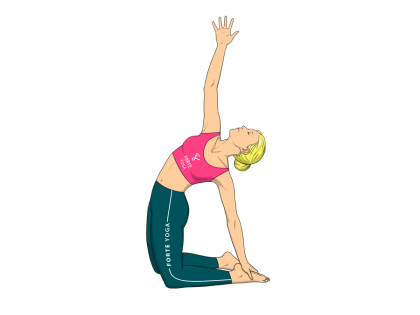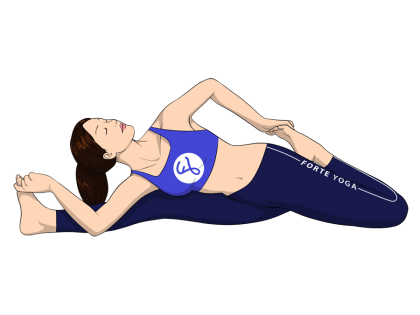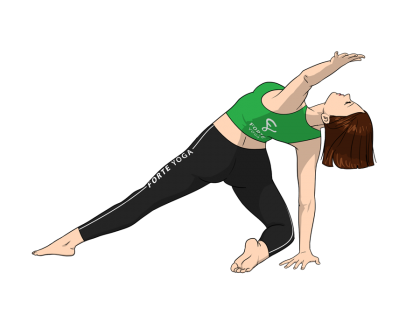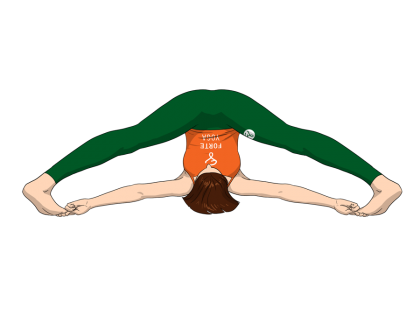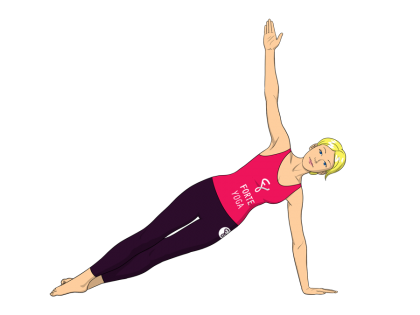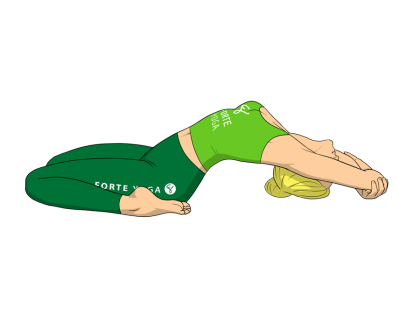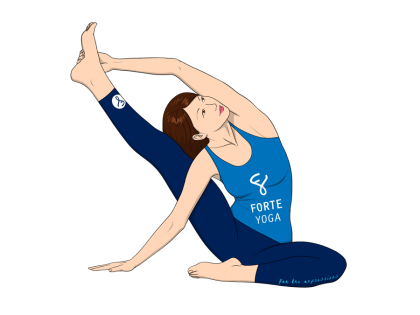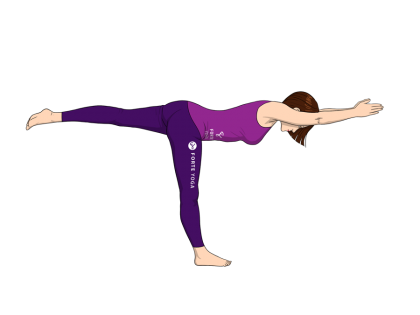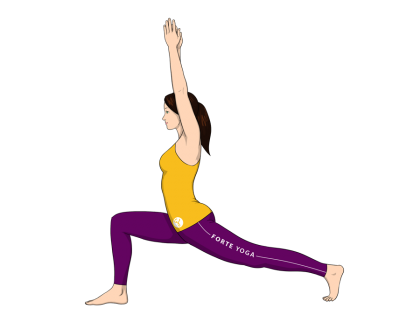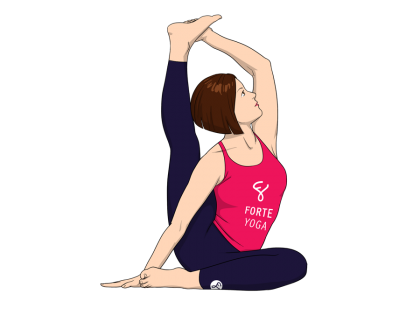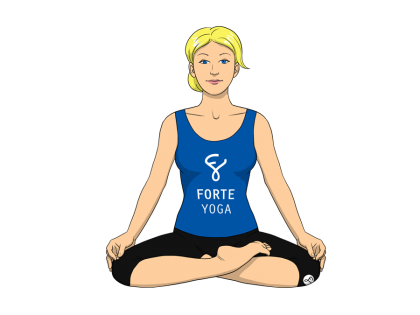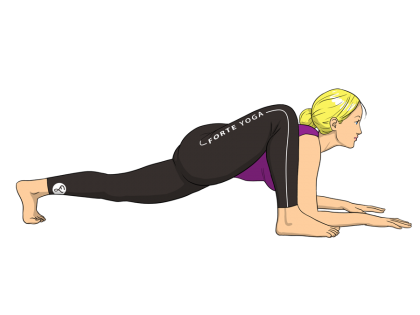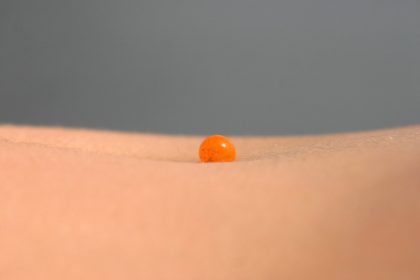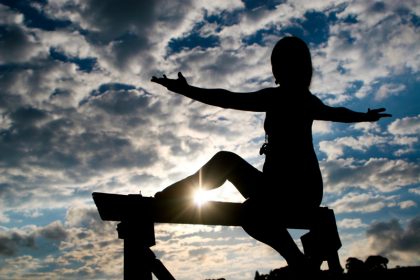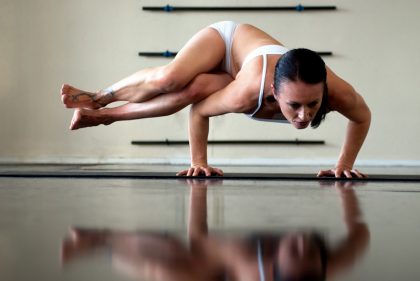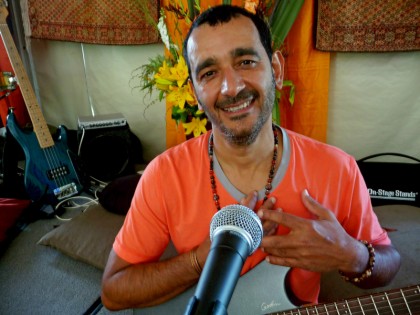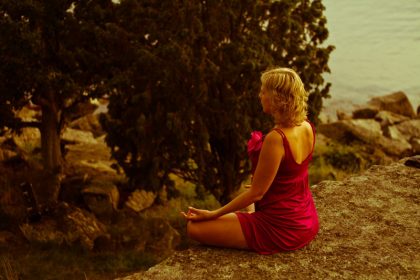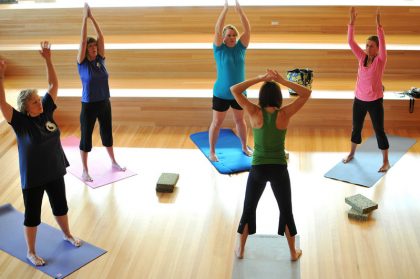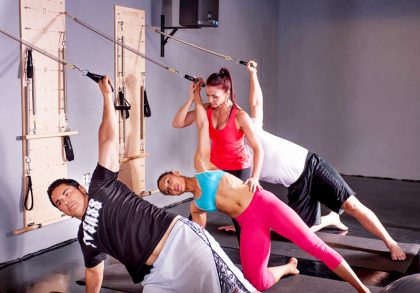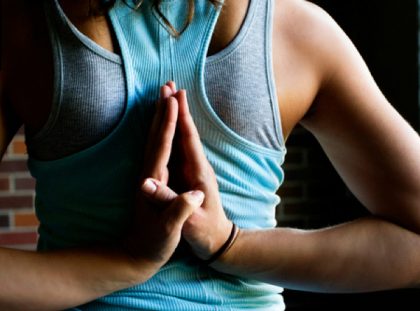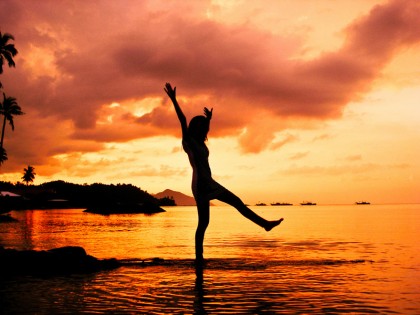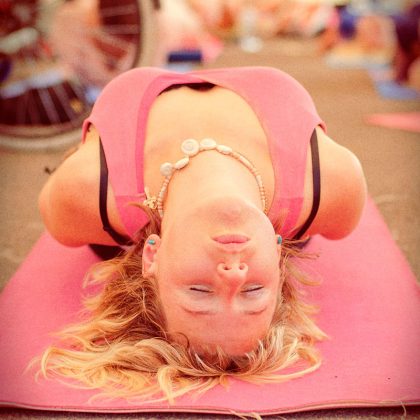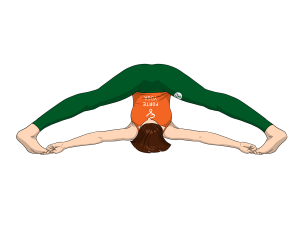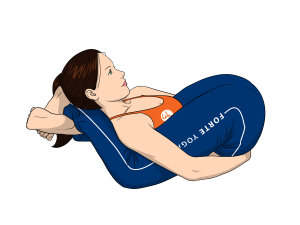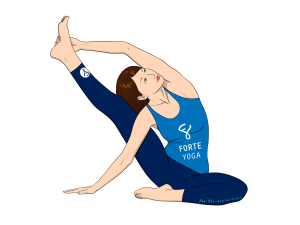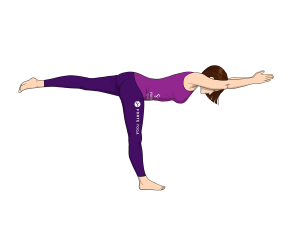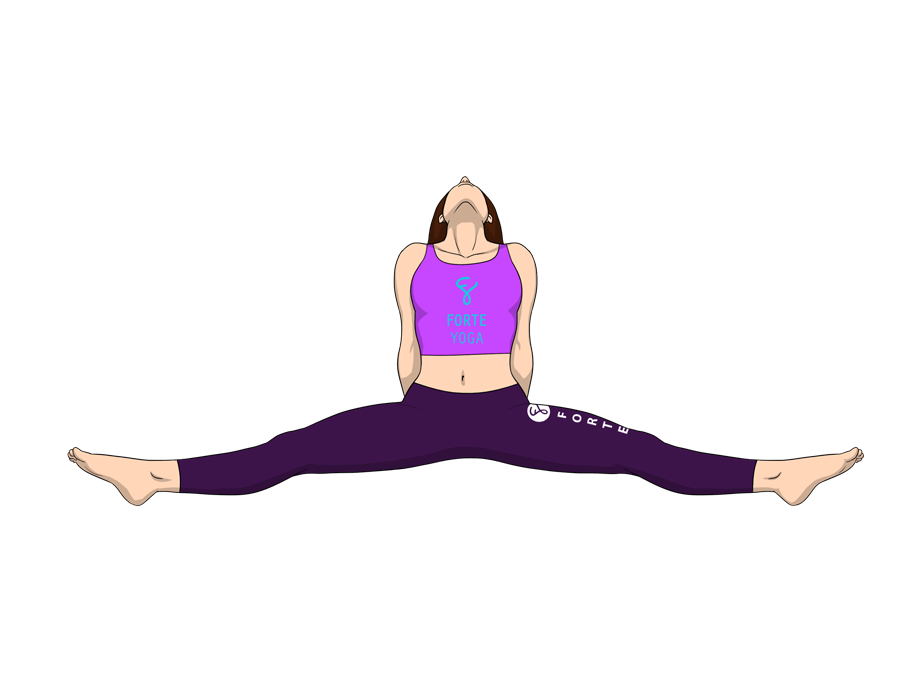
Upward Facing Seated Angle Yoga Pose is a seated pose that targets the calves and hamstrings and is ideal for yogis and yoginis at an intermediate level.
 svadisthana – the sacral chakra
svadisthana – the sacral chakra anahata – the heart chakra
anahata – the heart chakra[yoga-sharrre]
- Begin in the Staff Pose (Dandasana), back straight and legs outstretched in front of you. Lean back slightly and open your legs about 90 degrees or more. Press your thigh bones into the ground and make sure your knees are pointing up towards the sky. Keep your muscles engaged and your feet flexed with the toes pointing up. Push your hands into the floor and push your buttocks forward, increasing the angle of your stretch.
- Check the position of your legs. Your knees should be pointing up toward the ceiling; if they are not, roll your thighs outward slightly and press them into the floor. Push through your legs and out your heels.
- Keeping your spine long and your shoulders square, place your hands 1-2 inches behind your sitting bones, palms down and shoulder-width apart. Your fingers may be pointing out directly behind you, or in directly toward you. Open the chest and the shoulders and gently curve your back as you shift your weight onto your hands. Tilt your head without putting strain on the neck, gazing up at the ceiling.
- Hold for 30-60 seconds, or longer if you feel comfortable. Do not curve your back too far as this could cause tension in the lower back, neck and shoulders. Come out of the position with an exhalation.
- Breathe deeply through each step.
- Placing your hands flat on the floor 1-2 inches behind you may not be possible at first depending on the flexibility of your legs and shoulders. Do not force the position, which may cause back strain. Get as close as you can without compressing your back, neck or shoulders, eventually building the flexibility to perform the asana fully.
- If you have a history of lower back injuries, consult an instructor or doctor before attempting this pose.
- If you’re new to this pose and aren’t very flexible yet, do not force your legs wider than is comfortable, which can cause injury.
This position is a great counter after the Wide-Angle Seated Forward Bend (Upavistha Konasana). It opens up the chest and shoulders and is great to perform after techniques that suppress these areas.
The direction your fingers are pointing will change the stretch in your shoulders slightly; choose the one most comfortable for you starting out, but switch it up for variation.
If you feel a tightness in your hips or lower back, sit on a folded towel or blanket.
If you have trouble bending forward you can bend your knees a little, but make sure your toes and knees still point up.
All Muscles: Calves, hamstrings, lower back, spine, inner thighs
Target Muscles: Calves, hamstrings, lower back
- Stimulates inner abdominal organs.
- Opens hips and releases the groins.

